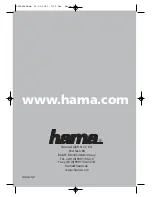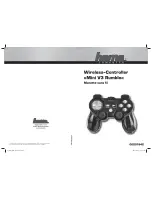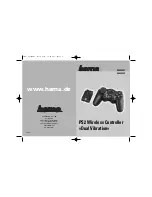
3-16
L90 LINE CURRENT DIFFERENTIAL SYSTEM – INSTRUCTION MANUAL
WIRING
CHAPTER 3: INSTALLATION
3
3.3.5 Process bus modules
The L90 can be ordered with a process bus interface module. The module interfaces with the HardFiber Process Bus
System, or HardFiber Brick, allowing bidirectional IEC 61850 fiber optic communications with up to eight HardFiber Bricks.
The HardFiber system integrates seamlessly with the existing UR-series applications, including protection functions,
FlexLogic, metering, and communications.
This process bus system offers the following benefits:
•
Reduces labor associated with design, installation, and testing of protection and control applications using the UR by
reducing the number of individual copper terminations
•
Integrates seamlessly with existing UR applications, since the IEC 61850 process bus interface module replaces the
traditional CT/VT modules
•
Communicates using open standard IEC 61850 messaging
For details on the HardFiber system, see its Instruction Manual.
3.3.6 Contact inputs and outputs
Nearly all contact input/output modules have 24 terminal connections. The connections are arranged typically as three
terminals per row, with eight rows in total. A given row of three terminals can be used for the outputs of one relay. For
example, for form-C relay outputs, the terminals connect to the normally open (NO), normally closed (NC), and common
contacts of the relay. For a form-A output, there are options of using current or voltage detection for feature supervision,
depending on the module ordered. The terminal configuration for contact inputs is different for the two applications.
The contact inputs are grouped with a common return. The input/output modules have three versions of grouping: four
inputs per common return, five inputs per common return on a high-density module, and two inputs per common return.
When a contact input/output module is ordered, four inputs per common is used. If the inputs must be isolated per row,
then two inputs per common return are selected (4D module).
The tables and diagrams on the following pages illustrate the module types (6A and so on) and contact arrangements that
can be ordered for the relay. Since an entire row is used for a single contact output, the name is assigned using the module
slot position and row number. However, since there are two contact inputs per row, these names are assigned by module
slot position, row number, and column position.
Some form-A / solid-state relay outputs include circuits to monitor the DC voltage across the output contact when it is
open, and the DC current through the output contact when it is closed. Each of the monitors contains a level detector
whose output is set to logic “On = 1” when the current in the circuit is above the threshold setting. The voltage monitor is
set to “On = 1” when there is a voltage across open contact (the detector allows a current of about 1 to 2.5 mA), and the
current monitor is set to “On = 1” when the current flowing through the closed contact exceeds about 80 to 100 mA. The
voltage monitor is intended to check the health of the overall trip circuit, and the current monitor can be used to seal-in
the output contact until an external contact has interrupted current flow. If enabled, the current monitoring can be used as
a seal-in signal to ensure that the form-A contact does not attempt to break the energized inductive coil circuit and weld
the output contacts.
Block diagrams are shown as follows for form-A and solid-state relay outputs with optional voltage monitor, optional
current monitor, and with no monitoring. The actual values shown for contact output 1 are the same for all contact
outputs. Form-A contact output with or without a current or voltage monitoring option is not polarity sensitive. The polarity
shown in the figure is required for solid-state contact output connection.
















































